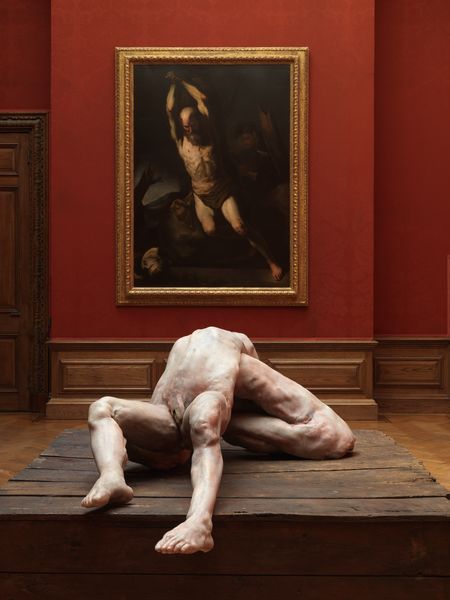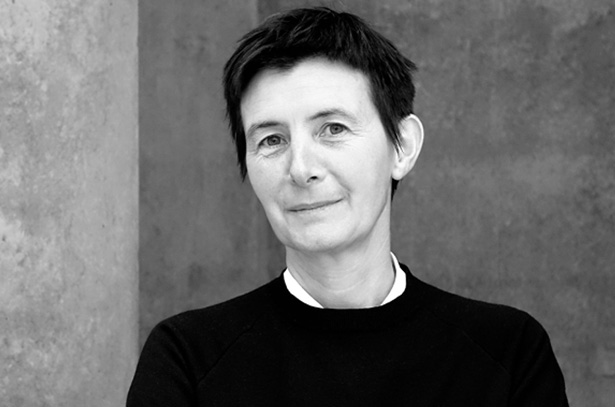
Berlinde De Bruyckere, Luca Giordano
WE ARE ALL FLESH
3 April - 2 May 2009
London
'We are all Flesh. Berlinde De Bruyckere, Luca Giordano' is a collaboration between Hauser & Wirth and P. & D. Colnaghi & Co. Ltd.
Berlinde De Bruyckere has made a major new sculpture inspired by the paintings of Baroque Neapolitan artist Luca Giordano. Her themes are those that have always confronted humanity: suffering, loneliness, death and remembrance. She revisits religious and mythological subjects, re-imagining motifs from art history, yet her works possess a powerful resonance, startling in their vulnerability and associative reach. Deploying emotive and uncannily realistic materials — wax, wood, iron, wool, hair and the hides of horses — her figurative sculptures are life-like yet unnaturally distorted.
Her new work is a wax sculpture of male figures, their disturbingly conjoined bodies forming a symbiotic dialogue with two pieces by Giordano, _Saint Bartholomew and Prometheus Bound_ (both made circa 1660). These paintings each depict a muscular shackled male figure in the throes of torture, their strained flesh lit up against surrounding darkness. Using heavy chiaroscuro to emphasise the figures’ anatomy, the works possess a naturalism and dynamism that over 300 years after their execution seems contemporary.
In contrast to Giordano’s gleaming bodies portrayed within well-known gruesome stories, De Bruyckere is emphatically not a narrative artist: her works present the body as perishable and fragmented, eerily incomplete. Flesh resembles meat in her new sculpture — wrinkled, scarred and slack yet bizarrely autonomous. The incredible verisimilitude that she works into her forms — the translucent depth of skin tones and intricate landscape of surface details that pock and individualise each being — attest to painstaking care and empathy. Intolerably mutated, De Bruyckere’s forms shock then absorb the viewer through their disquieting beauty. "On one hand," she has said, "I shoot disconcerting questions at the spectator, to which I do not give any reassuring answers; on the other hand, the presence of human characteristics in my figures is familiar, and therefore comforting."
The reach of De Bruyckere’s title is extended through further works in the exhibition, which also include those by other artists. The viewer encounters drawings by Taddeo Zuccaro (1529 – 66): _The Incredulity of Saint Thomas_ (c. 1556 – 58); and his brother Federico Zuccaro (1540/41 – 09): _Two studies of a reclining male nude with his left arm raised_ (c. 1581), as well as three works on paper by De Bruyckere in the Green Room. Entitled _Doornenkroon_, meaning 'crown of thorns', these are collages, each bearing minute stigmatas that have been impressed through the process of their making. In the sculpture _Doornenkroon II_, 2008 (2008), lead metal from electricity cable and nails suggest thorns, which adorn a flesh-coloured entanglement made from wax cast from the twigs of a tree. Displayed in an old glass taxidermy dome on a plinth within Colnaghi’s library, the sculpture has an archival feel, as though viewers are witness to a carefully preserved medical curiosity.
On the second floor _Letsel_ (2008) hangs suspended from the ceiling, a wax sculpture sutured and shaped into an uncompromising hunk of meat. To make it the artist cast bellies of horses, the scars where one had been cut open is visible, and sutured these with a cast made from a human body. Unidentifiable and disturbing, the flesh reconfigured here is emphatically dead.
The old master drawings in this exhibiton are presented by Katrin Bellinger. For further information please visit www.bellinger-art.com
_Berlinde De Bruyckere (born Ghent 1964) won international acclaim at the 2003 Venice Biennale, when her sculptures were shown in the Italian Pavilion. Recent solo shows include Espace Claude Berri, Paris (2008), Galleria Continua, San Gimignano (2007), Museum Moderner Kunst Kärnten, Klagenfurt (2007) and Royal Academy of Fine Arts, Ghent (2007). Her numerous group shows include the 3rd Moscow Biennale of Contemporary Art (2009), 'Artempo – Where Time Becomes Art', Palazzo Fortuny, Venice (2007) and the 4th Berlin Biennial for Contemporary Art (2007). This is the second exhibition of her work at Hauser & Wirth London. Berlinde De Bruyckere lives and works in Ghent.
Luca Giordano (Naples 1634-1705 Naples) was one of the most celebrated artists of the 17th century, producing religious and mythological paintings as well as many decorative fresco cycles in both churches and palaces. Giordano’s early works, produced in his native Naples, show the influence of the powerful and sometimes dark art of Caravaggio and Jusepe de Ribera. From the 1650s onwards, Giordano travelled extensively in Italy and absorbed the ideas of other schools of painting, most notably that of Pietro da Cortona and such 16th century Venetian masters as Titian and Veronese. He developed an individual style characterised by a new sense of dazzling light and colour, and of movement and dramatic action, which was to anticipate Rococo art of the 18th century. Giordano worked in Naples, Venice, Florence and Madrid, and enjoyed great success throughout Europe._
GALLERY HOURS: Monday to Saturday 10am – 6pm Closed over Easter from Friday 10 April – Monday 13 April
CONCURRENT EXHIBITION: Andreas Hofer. air tsu dni oui sélavy 196A Piccadilly, 20 March – 9 May Gallery hours: Tuesday – Saturday, 10am – 6pm
For further information and artwork material, please contact HAUSER & WIRTH LONDON Phone +44 (0)20 7399 9789, press@hauserwirth.com or visit our website at www.hauserwirth.com
Installation views


About the Artist

Berlinde De Bruyckere
Working with casts made of wax, animal skins, hair, textiles, metal and wood, Berlinde De Bruyckere renders haunting distortions of organic forms. The vulnerability and fragility of man, the suffering body—both human and animal—and the overwhelming power of nature are some of the core motifs of De Bruyckere’s oeuvre.
Born in Ghent, Belgium in 1964, where she currently lives and works, De Bruyckere is profoundly influenced by traditions of the Flemish Renaissance. Drawing from the legacies of the European Old Masters and Christian iconography, as well as mythology and cultural lore, De Bruyckere layers existing histories with new narratives suggested by current events to create a psychological terrain of pathos, tenderness and unease. The dualities of love and suffering, danger and protection, life and death and the human need for understanding are the universal themes De Bruyckere has been dealing with since the beginning of her career. ‘I want to show how helpless a body can be,’ De Bruyckere has said. ‘Which is nothing you have to be afraid of—it can be something beautiful.’
Current Exhibitions
1 / 12

















